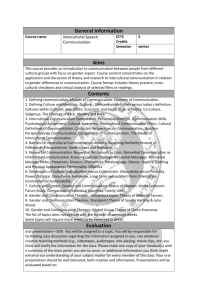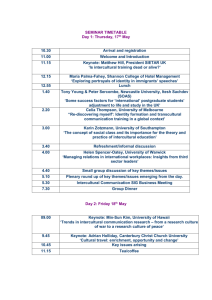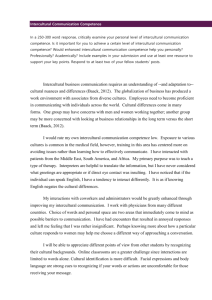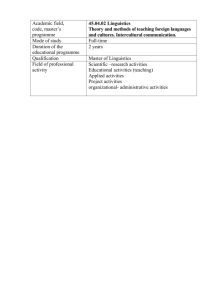DISCUSSION QUESTIONS AND IDEAS 1. What makes intercultural
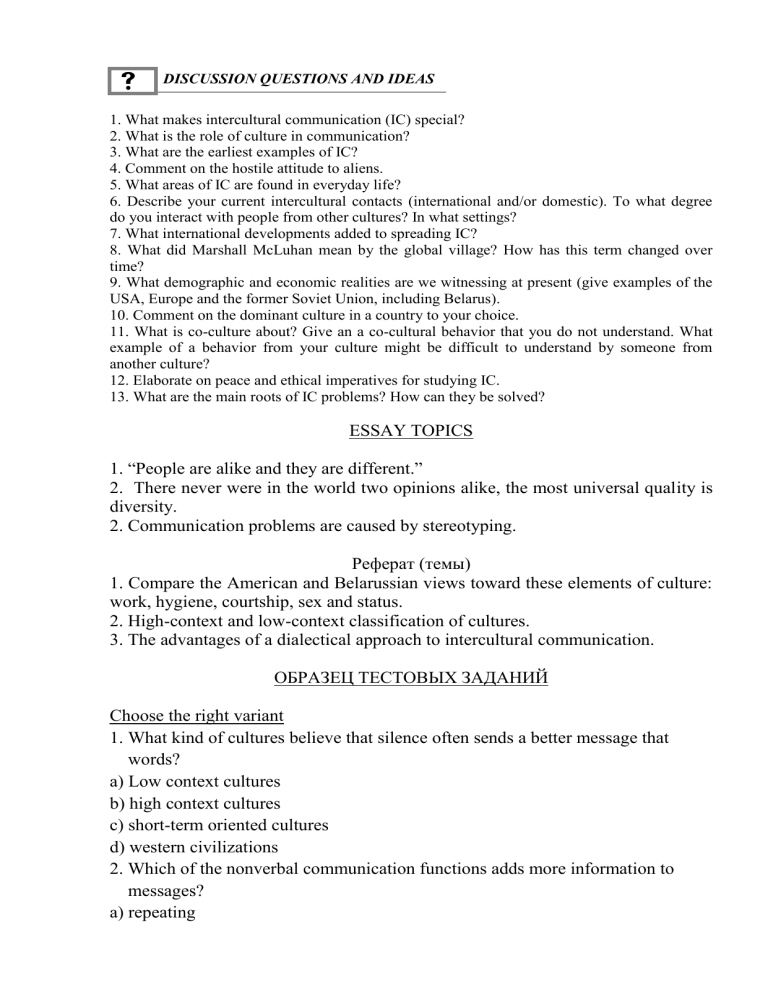
DISCUSSION QUESTIONS AND IDEAS
1. What makes intercultural communication (IC) special?
2. What is the role of culture in communication?
3. What are the earliest examples of IC?
4. Comment on the hostile attitude to aliens.
5. What areas of IC are found in everyday life?
6. Describe your current intercultural contacts (international and/or domestic). To what degree do you interact with people from other cultures? In what settings?
7. What international developments added to spreading IC?
8. What did Marshall McLuhan mean by the global village? How has this term changed over time?
9. What demographic and economic realities are we witnessing at present (give examples of the
USA, Europe and the former Soviet Union, including Belarus).
10. Comment on the dominant culture in a country to your choice.
11. What is co-culture about? Give an a co-cultural behavior that you do not understand. What example of a behavior from your culture might be difficult to understand by someone from another culture?
12. Elaborate on peace and ethical imperatives for studying IC.
13. What are the main roots of IC problems? How can they be solved?
1. “People are alike and they are different.”
2. There never were in the world two opinions alike, the most universal quality is diversity.
ESSAY TOPICS
2. Communication problems are caused by stereotyping.
Реферат (темы)
1. Compare the American and Belarussian views toward these elements of culture: work, hygiene, courtship, sex and status.
2. High-context and low-context classification of cultures.
3. The advantages of a dialectical approach to intercultural communication.
ОБРАЗЕЦ ТЕСТОВЫХ ЗАДАНИЙ
Choose the right variant
1.
What kind of cultures believe that silence often sends a better message that words? a) Low context cultures b) high context cultures c) short-term oriented cultures d) western civilizations
2. Which of the nonverbal communication functions adds more information to messages? a) repeating
b) complementing c) substituting d) regulating
Перечень экзаменационных вопросов
1.
The importance of intercultural communication
2.
Imperatives for studying intercultural communication
3.
Points of contact in intercultural communication
4.
Communication and culture
5.
Principles and elements of communication
6.
Perception and culture
7.
G. Hofstede’s value dimensions
8.
E. Hall’s high-context and low-context orientation
9.
Three approaches to studying intercultural communication (social science, interpretive, critical)
10.
A dialectical approach to identity.
11.
Types of identity.
12.
Developing cultural identity by minority and majority cultures
13.
Communication problems caused by stereotypes
14.
Prejudice and its negative impact
15.
Overcoming stereotypes and prejudice
16.
The components of language
17.
Language and meaning
18.
Language and perception (nominalist and relativist positions)
19.
Variations in communication styles
20.
Cultural variations in language
21.
Discourse: language and power
22.
Equivalence and accuracy in translation and interpretation
23.
Verbal vs. nonverbal communication
24.
Classification of nonverbal communication by body behavior
25.
Classification of nonverbal communication by space and distance
26.
Classification of nonverbal communication by time and silence
27.
Intercultural transitions
28.
Types of migrant groups
29.
Migrant-host relationships
30.
Models of cultural adaptation
31.
Stages and cultural differences in intercultural relationships
32.
Communicating in intercultural relationships. Permanent relationships.
33.
Culture, communication and conflict. General overview.
34.
Interpretive and critical approaches to social conflict
35.
Three approaches to understanding conflict
36.
Characteristics of intercultural conflict
37.
Conflict as opportunity vs. conflict as destructive
38.
Styles of managing conflict with regard to intercultural communication
39.
Gender, ethnicity and conflict
40.
Dealing with conflict
41.
International business context
42.
Culture specific business practices
43.
Cultural differences in education
44.
Different styles in multicultural education
45.
Multicultural teaching competencies
46.
Ethical consideration and intercultural ethic
47.
Ethical considerations in intercultural business relations
48.
The outlook for intercultural communication
49.
The impact of religion, family and history on culture and communication
50.
Folk and popular cultures in the context of intercultural communication

